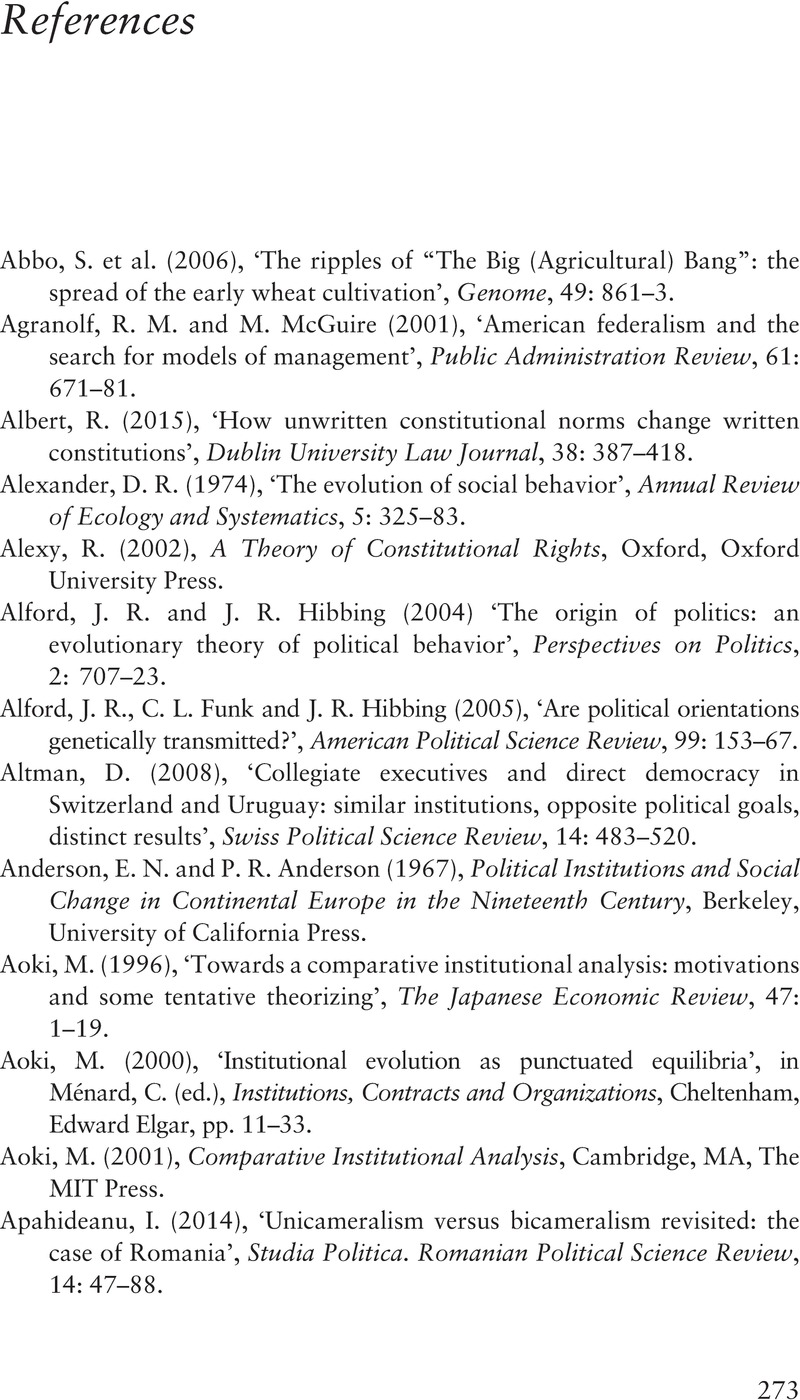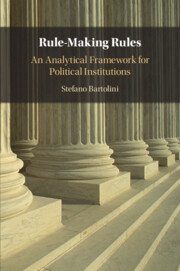References
Published online by Cambridge University Press: 16 June 2022
Summary

- Type
- Chapter
- Information
- Rule-Making RulesAn Analytical Framework for Political Institutions, pp. 273 - 296Publisher: Cambridge University PressPrint publication year: 2022



